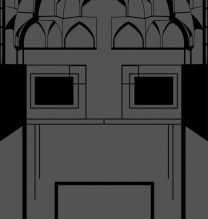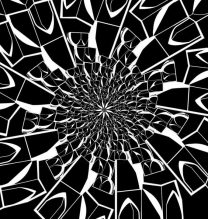Al A’raaf
Elika Hedayat
Al A’raaf
Elika Hedayat
Mohsen Gallery
That fell, refracted, thro’ thy bounds, afar
O Death! From eye of God upon that star:
Sweet was that error—sweeter still that death—
Sweet was that error—ev’n with us the breath
—Edgar Allan Poe
Mohsen Gallery is delighted to announce “Al A’raaf” by Elika Hadayet as the next artwork commissioned for Pasio, our 7.5m2 × 9m gallery courtyard exhibition space dedicated to art installations. On view from June 30th to July 26th, “Al A’raaf” is Hedayat’s first show with the gallery. Mohsen will hold an opening reception on Friday, June 30th.
For years, Hedayat has been developing a multifaceted practice that encompasses drawing, documentary, installation, and performance that tenaciously invents forms that recycle, rethink, and update the collective memory. On a general note, her work revisits historical references, transferring them onto the terrain of personal experience, using mainly the various possibilities of her repertoire as a narrative and tool for recuperating memory. While her work is essential in its power of personal narrative, it is her drawing that is its true foundation.
The materials upon which she relies, span the ancient to the contemporary: murals appear seamlessly alongside silicon and video. Indeed, in form as well as in content, Hedayat’s works situate themselves at once inside and outside the contemporary. By drawing attention to the ethical beliefs and the sequence of life, death, and life after death, Hedayat critiques ideological structures that define a position for the one who has certain knowledge of good and evil and knows the good of others.
Al A’raaf is the Muslim separator realm or borderland between heaven and hell, inhabited by the people who are evenly balanced in their sins and virtues. In the present installation, Hedayat deals with the idea of limbo, but approaches it from a different angle, playing with it as a veil between vice and virtue and the heights which exist amid heaven and hell. Ibn Kathir described Al A’raaf as a wall that contains a gate, and in this high wall live people who witness the terror of hell and the beauty of paradise.
In “Al A’raaf”, Pasio is the space through which both sides connect. A Plexiglas ceiling is placed between the two paintings in the middle of the Pasio. A life-size, silicon bust is installed in the midst of the Plexiglas so that it cuts the bust in two. In effect, the plate is installed as a false ceiling between the two floors, to which half of the bust is attached from above and the other half from below. The two busts are the same, showing the face of a man looking to the front. The lower half of the bust faces the ground and the upper half to the sky. Two large paintings are hanged in front of the doorway of the first floor and in front of the glass window of the second floor. A pond is placed on the Pasio floor. The face of the lower bust is placed in front of the pond, staring into it.
A looped video can be seen in the pond’s floor. The video is an animated image of black and white circles. Staring into the video, will give the viewer the illusion of circular movement. One meter above the second painting and near the Pasio ceiling, there are images of geometric, vault-like forms, with black and white lines, painted on the Pasio walls.
Elika Hedayat was born in 1979 and grew up in Iran. After studying at the College of Fine Arts in Tehran, she entered the École Nationale Supérieure des Beaux-Arts (attending the seminars of Christian Bernard and atelier of Annette Messager). While there, she went on a year’s exchange to Vancouver in Canada. In 2008, she left the ENSBA, graduating with the highest honors. She then spent two years at the Studio National des Arts Contemporains du Fresnoy. She has exhibited her work in solo and group shows internationally. Elika Hedayat is represented by Aline Vidal Gallery in Paris. She lives and works between France and Iran.








